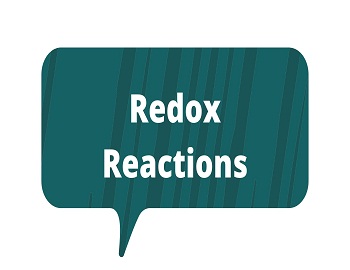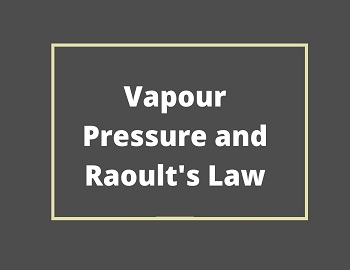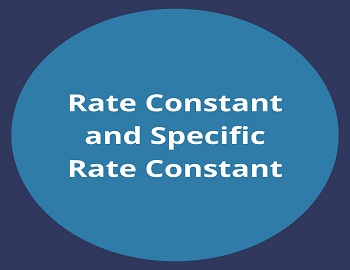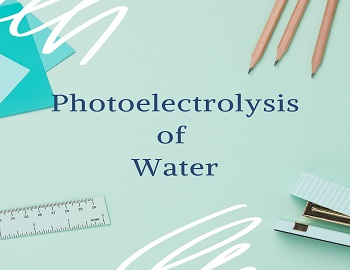Redox Reactions:
Oxidation- It can be defined as a process in which the following occurs-
- Addition of oxygen.
- Addition of non-metals.
- Loss of electrons.
- Increase in positive oxidation state.
- Decrease in negative oxidation state.
Reduction- It can be defined as a process in which the following occurs-
- Addition of hydrogen.
- Addition of metal.
- Gain of electrons.
- Decrease in positive oxidation state.
- Increase in negative oxidation state.
Redox Reactions- These are those reactions in which both oxidation and reduction occur simultaneously and are called Redox Reactions. Redox reactions involve the transference of electrons from the reducing agent to oxidising agent. Neither oxidation nor reduction can take place alone. They are complementary processes and always go side by side.
Oxidising Agent- It is that reagent which undergoes reduction.
Reducing Agent- It is that reagent that undergoes oxidation.
Oxidation Number or Oxidation State- The oxidation number of an element in a compound is the residual charge that its atom appears to have when all other atoms in a molecule are removed as ions by counting the shared electrons with the more electronegative atoms.
Rules for Calculating Oxidation State:
- Fluorine = -1 always.
- Hydrogen = +1 (except in ionic compound hydrides).
- Oxygen = -2 (except peroxides, superoxides, fluorine compounds).
- Alkali metals = +1.
- Alkaline earth metals = +2.
- Summation of all oxidation states = total charge.
Find out the Oxidation States:
| (a) HF F = -1 ⇒ x + (-1) = 0 ⇒ x = +1 (b) H2O O = -2 ⇒ 2 (x) + (-2) = 0 ⇒ 2x = +2 ⇒ x = +1 (c) CaO Ca = +2 ⇒ (+2) + x = 0 ⇒ x = -2 (d) CaH2 Ca = +2 ⇒ (+2) + 2 (x) = 0 ⇒ 2x = -2 ⇒ x = -1 |
Direct Redox Reaction:
These are those reactions in which both oxidation and reduction take place in the same vessel i.e.

When a thick zinc rod is dipped in one molar copper sulfate solution and after a few hours it is observed that-
- The disappearance of the blue colour.
- The appearance of dull white colour.
- The zinc rod becomes thin.
- Copper is deposited on a zinc rod.
- Rise in temperature.
All of these can be explained in terms of the following reactions-

[It happens because the reduction potential of zinc is less and that of copper is more (high)].
| E°reduction (Zn) = -0.76 V E°reduction (Cu) = +0.34 V |
In this experiment electrons are available but even then there is no production of electrical energy because of the two following reasons-
- The moment electrons are lost by the zinc rod and at the same moment, these are gained or captured by copper ions.
- Absence of conducting wires or electrical circuit.
Balancing of Redox Reactions:
(1) Principle- The number of electrons lost during oxidation and those gained during reduction must be equal.
(2) Ion-Electron Method (Jette and Lamev):
- Find the oxidation number of each element and thus, determine the elements undergoing oxidation or reduction.
- Write oxidation and reduction half-reactions putting an appropriate number of an electron to the reactants or products side.
- Balance O atoms in each half-reaction by adding a number of H2O molecules to the side falling short of O atoms.
- Balance H atoms for ionic equation by adding H+ ions to the side falling short of H atoms in case medium is acidic.
- In the case of basic medium balance H atoms by adding H2O molecules to the side falling short of H atoms and an equal number of OH– to the other side.
- Equalise the number of electron lost or gained and add the two half reaction.

(3) Oxidation Number Method:
- Write a skeleton equation with the oxidation number of each element.
- Determine increase and decrease of oxidation number per atom.
- Equalise increase and decrease in oxidation number on the reactant side.
- Balance the equation w.r.t. atoms other than H and O atoms.
- Balance H and O atoms in a similar way as in the ion-electron method.

Spectator Ion- Species that are present in the solution but do not take part in the reaction and are also omitted while writing the net ionic reaction are called spectator ions or bystander ions. Example- Zn + 2H+ + 2Cl– ———-> Zn++ + 2Cl– + H2. In this reaction, Cl– ions are omitted and are called spectator ions and appear on the reactants as well as product side.
Autoxidation- Turpentine, phosphorous and metals like Zn and Pb can absorb oxygen from the air in the presence of water. In this process water automatically gets oxidized to hydrogen peroxide. The phenomenon of the formation of H2O2 by the oxidation of H2O is known as autoxidation.
| Pb + O2 ———-> PbO2 ; PbO2 + H2O ———-> PbO + H2O2 |
Disproportionate Reaction- A reaction in which the same species is oxidized as well as reduced. For such a reaction to occur, Reactant species must contain an element which has at least three oxidation states and the element itself must be in an intermediate oxidation state while the lower and higher oxidation state is available for oxidation and reduction.

Stock Notations- The method of representing the oxidation number of metal by Roman numbers I, II, III, etc. within parenthesis is known as stock notation. Example- FeSO4 as iron (II) sulfate.









Comments (No)